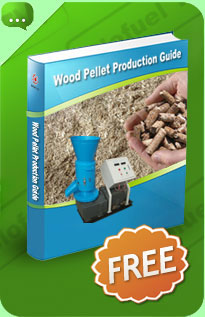Small Pellet Mill
Producing Pellets By using a Small Pellet Mill
To manufacture a homemade pellet mill is possible from a technical perspective , yet is in fact neither cost-effective or a practical choice. In order to consistently and efficiently process wood into fuel pellets, some fairly heavy engineering is required to deal with the forces involved.
On BiofuelTech web site we promote a variety of small pellet mills that can be utilized in the house. These pellet mills are of top quality, and also reasonably priced since the prices are straight from producer. Small pellet mills are usually all flat die pellet mills. The flat die pellet mill can be a vertical design. The rollers lay on the top of the die, applying pressure vertically up to the top surface of the die. Based on the design, either the roller shell or die is going to be stationary and the other will rotate. Materials enter from the top, and falls between the rollers and die. The pellets come through the bottom of the die, and generally are cut to length by using a knife. Pellet length may appear far more crucial than a lot of people appreciate. Some pellet stove augers cannot handle oversized pellets, causing damage to the auger or maybe just obstructing and resulting in the stove to stop functioning properly, thereby shorter pellets are better.
One view that many people in the pellet production market including BiofuelTech share is that pellet production is more of an art than an exact technology. The reasons are each raw material has its own unique characteristics. Part of the differences lie in the percentage of natural lignin within the raw material. Lignin is the natural binding agent found in all biomass materials, under the pressure and heat from the pellet mill the lignin is dissolved. As soon as the pellet has been shaped the lignin cools to create pellets
Before the raw material is suitable for the pellet mill, it first should be prepared correctly. For instance if you want to produce 6mm pellets, which is the normal size of pellet most pellet stoves use, you must provide the pellet mill with a raw material of 6mm or below. Therefore this implies saw dust is proper, however wood chips will require more processing. After wood has become chipped, the very best device to reduce the chips further in size is often a hammer mill. A hammer mill works on the principle of attrition. Through the speed impact of the hammers on the wood chips, the chips are smashed into smaller particles. To ensure the particles are below 6mm a screen is positioned inside the hammer mill. Therefore no particles can escape the hammers until they are below 6mm in size.
Once the material is off the ideal size, generally it ought to be dried before entering the pellet mill, this is particularly true if the wood chips are from fresh virgin wood. For small-scale pellet production, the most practical and affordable means of drying the material is through a flash dryer. Flash dryers also are referred to as pipe dryers or air current dryers. The hot air is generated in the stove burning wood logs, chips or pellets. From the stove there is then the series of pipes with expansion chambers. A fan pulls the wet material through the pipe, in doing so exposing the wet particles to the hot air from the stove. At the end of the pipe system a cyclone separates the dry material.
We also provide one of the few small ring die pellet mills which can be used at home. The mini pellet mill has specifically created to run from single phase power, and consumes below 2kws of power, which is comparable to running your kettle.

